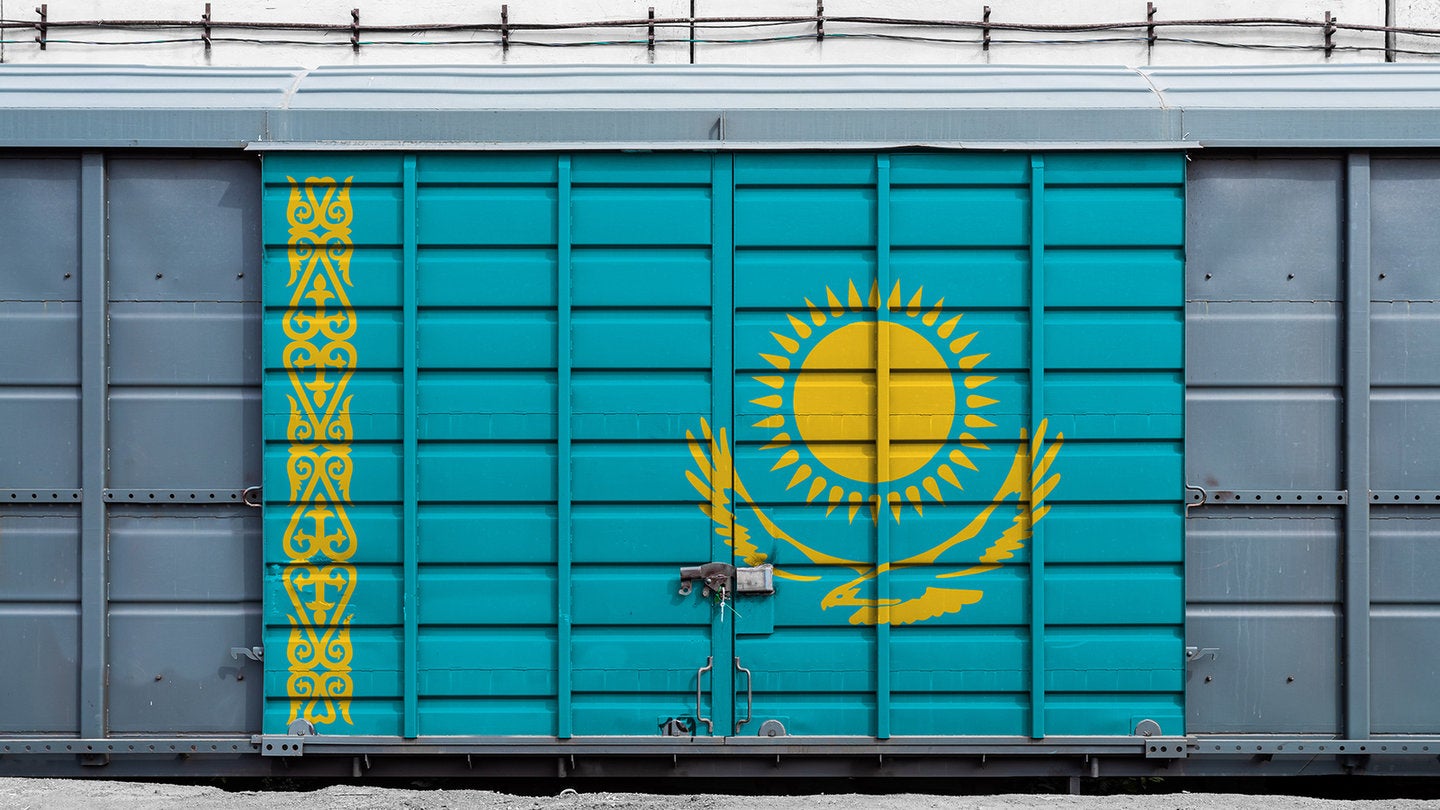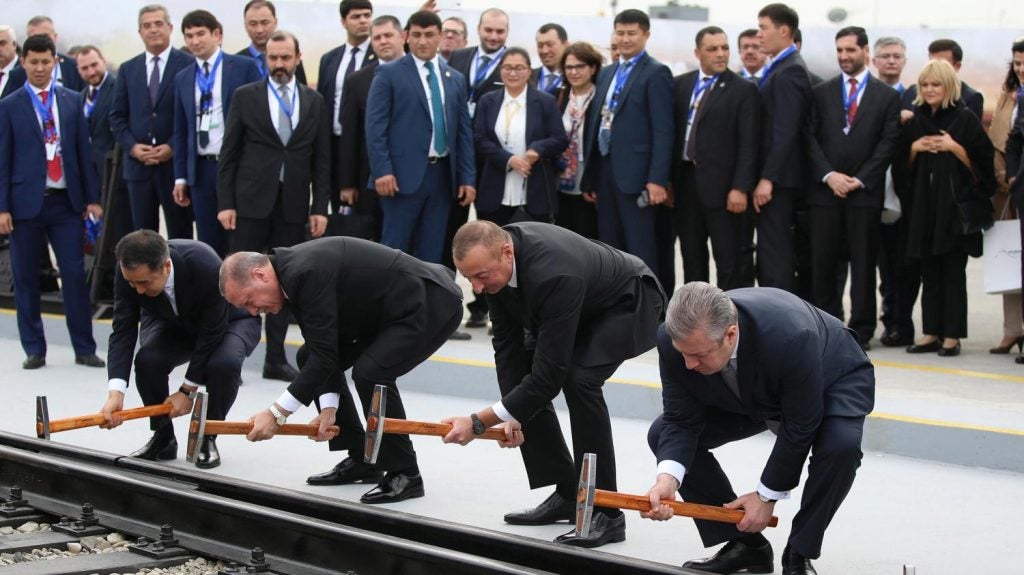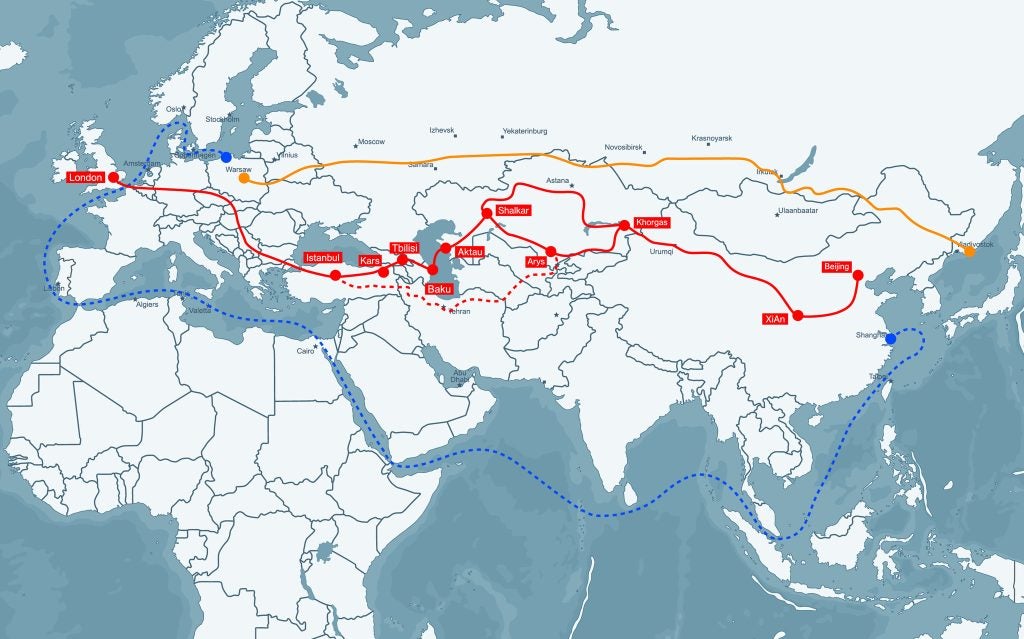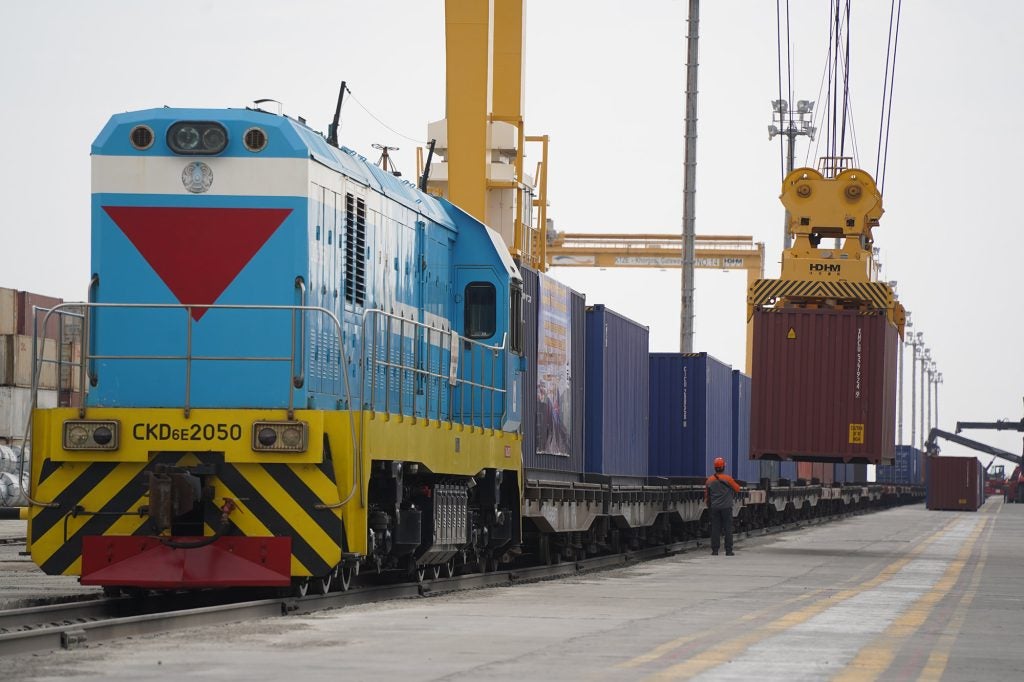
Kazakhstan, Azerbaijan, and Georgia announced in late June of this year that they are seeking to unify rail tariffs and set up a joint logistics company.
This marks a major milestone in the process of expanding the Trans-Caspian International Transport Route (TITR) into the long-anticipated Middle Corridor between Europe and China.
The Middle Corridor is a shorter and sanctions-free alternative to the Eurasian Northern Corridor, which runs through the Trans-Siberian Railway, Trans-Manchurian Railway, Trans-Mongolian Railway, and the Baikal Amur Mainline.
Weeks earlier in May, a joint venture was agreed between Kazakhstan Railways and Singapore-based PSA International to further speed up the process that will see Central Asian and Kazakhstani railroads take a leading role in the logistics of Eurasian trade.
This is the culmination of a vision of independence set in motion in the 1990s by the region’s most influential leader since the fall of the Soviet Union, Kazakhstan’s first president Nursultan Nazarbayev, who was in office from 1991 to 2019.
Central Asian countries’ quest for geopolitical and geo-economic independence has grown further in recent months, following the war in Ukraine and Russia’s weakening hand in the region.
How well do you really know your competitors?
Access the most comprehensive Company Profiles on the market, powered by GlobalData. Save hours of research. Gain competitive edge.

Thank you!
Your download email will arrive shortly
Not ready to buy yet? Download a free sample
We are confident about the unique quality of our Company Profiles. However, we want you to make the most beneficial decision for your business, so we offer a free sample that you can download by submitting the below form
By GlobalDataRussian influence in decline?
“For political reasons, these plans did not go forward [for decades], because Russia had a tremendous influence on Kazakhstan,” says Gulmira Rzayeva, managing director of UK-based consultancy Eurasia Analytics.
The Russian route used to carry more than 90% of the rail traffic between Europe and the Far East prior to the war—yet now, with sanctions reducing shipments over the Eurasian Northern Corridor by as much as 40% last year, support for the Middle Corridor is growing.
“Key European countries that used to be opposed or lukewarm to it, such as Belgium, Luxembourg, and the Netherlands, have recently turned into its proponents,” adds Rzayeva.
Similarly to the ancient Silk Road, it is often compared to, the Middle Corridor is more of a network of interconnected routes than a single, neatly delineated corridor.

A main artery runs through Kazakhstan, Uzbekistan, and Turkmenistan, crosses the Caspian Sea to Azerbaijan, Georgia, and the Black Sea on its way into Europe: a total of about 4,250km of rail lines and 500km of sea transport. Alternatives include routes through Iran and Turkey that need no ferries.
This amounts to about 2,000km less than the Eurasian Northern Corridor, as well as (if all goes to schedule) transit time savings of about a week—or more than three weeks when compared to the southern sea route that transits the Suez Canal.
Downsides to the Middle Corridor, however, include the complex logistics and potential instability in the many countries along the way – especially Iran, which similarly to Russia is a nation under sanction.
But even so, goods have already been travelling for several years on some of the routes. Last year, approximately 1.5 million tons of goods travelled through Kazakhstan along the TITR, over double the volume compared to 2021.
Connecting with Belt and Road
It is incorrect to conflate the Middle Corridor, as observers sometimes do, with China’s Belt and Road Initiative (BRI). The main difference is that the Middle Corridor is primarily of concern to Central Asia, while the BRI is both larger in geographic scope and seen as a conduit of Chinese influence.
There is, nevertheless, considerable overlap – commentators are quick to point out that back in 2013, Kazakhstan and Nazarbayev personally played a key role in the launching of the BRI in the capital Astana as a kind of progenitor to the Middle Corridor – and today, funds from the BRI are expected to flow into the TITR.
“Much of what was discussed at the [2023 China-Central Asia] summit in Xi’an, China, included plans to upgrade bilateral investment agreements and increase cross-border freight volume between China and Central Asia,” says Felix Chang, a senior Asia expert at US-based think tank Foreign Policy Research Institute.

“Such plans would naturally give the Middle Corridor route a boost by accelerating the infrastructure needed to support trade and encouraging greater trade through it.”
The wider region is already busy building railways and other infrastructure. Kazakhstan alone has built 2,500km of railway in the past six years, to the cost of at least $35bn.
Uzbekistan and Kyrgyzstan are rapidly expanding their rail links, as well as their links with China. Azerbaijan and Kazakhstan, meanwhile, are working on their port capacities and ferries, seen as a potential bottleneck in the TITR.
Creating political independence for Kazakhstan
Kazakhstan and its neighbours’ strategic location, sandwiched between Russia and China, as well as other regional powers such as Turkey and Iran, can be both a foreign policy blessing and a curse.
The challenge to turn the latter into the former is enshrined in Central Asia’s iconic “multi-vector foreign policy,” which originated in Kazakhstan and was formulated in the early 1990s by Nazarbayev, says Uluc Ozulker, a former senior Turkish diplomat who served as the country’s ambassador to France as well as other nations.
Despite stepping down in 2019 after almost three decades in power as president, in his own words to make room for a younger generation of leaders, Nazarbayev remains a highly respected and influential figure in the region, according to Ozulker.
While ruling with an iron fist, Nazarbayev turned the country into the region’s most advanced economy. He also invested the country’s oil wealth into nation-building and infrastructure, making a top priority of radically modernising the rail system. That was the expression of the multi-vector policy that shaped Central Asia’s transportation, economic development, and foreign policy.

This policy involved developing key parts of the Middle Corridor, including the dry port of Khorgos, the Khorgos-Eastern Gates special economic zone on the border of China, and Aktau Seaport.
More than a shortcut that would save money for everybody involved, the Middle Corridor is a vital backup to trade links running through Russia for the entire region, which has traditionally relied on the Eurasian Northern Corridor for its imports and exports and is now suffering from the political destabilization of that route.
Beyond that, by increasing Central Asia’s leverage over both Russia and China and safeguarding strategic links to Europe, the Middle Corridor can act as a pillar of political independence for Khazakstan and its neighbours, as they navigate the changing geopolitical climate between Russia and China.
This article was originally published in our digital magazine, Future Rail. You can subscribe for free here.







